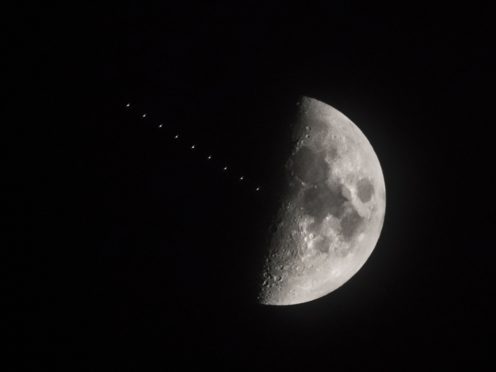Nasa astronaut Joseph Acaba has revealed he held on tight while doing a spacewalk during a recent trip to the International Space Station as he is afraid of heights.
“If you look at the pictures, I’m holding on to the railing,” he told a crowd at the Stennis Space Centre on the Mississippi Gulf Coast.
“It does take a little bit of work while you’re doing a spacewalk to realise, OK, it’s OK. You are not going to fall.”
Mr Acaba was making his first public appearance – on the ground – since his return from the space station on February 28.
He was at the space centre to give a talk about his experiences in space, future trips to the moon and beyond and working with his Russian counterparts.
Mr Acaba, who has logged more than 300 days in space on three separate flights, said space travel for private citizens is closer than many think.
“In the next year or so, we’re going to have commercial flights flying Nasa astronauts, and that’s the first big step,” he said.
“And, it’s never going to become routine. Going to space is difficult, but I think here in the near future, we are going to have more opportunities for people to fly in space.”
Great spacewalk training. Looking at reaction forces that we will feel in a micro-g environment. pic.twitter.com/Bw3g8IjNcR
— Joseph M. Acaba (@AstroAcaba) July 20, 2017
The ultimate goal, he said, is to get humans on Mars. But the path to Mars goes through the moon first.
“It’s a logical first step to go back to the moon,” he said.
“And while we’ve been there before, it was a very limited timeframe, and we have new technologies that we want to test, not only on the lunar surface but just orbiting the moon, getting some kind of a gateway so that we can go to Mars from there.”
The goal is to get to Mars in the 2030 timeframe and to the moon before that, he said.
Mr Acaba took off on Expedition 53/54 with a crew of Russian colleagues on September 13 2017.
While he was working quite closely in space with his Russian colleagues, tensions between Russia and the US have heated up back on Earth over allegations the Russians tried to manipulate the US elections.
The average astronaut training is about 2 years, and once you're assigned to a mission it's another 2 years of training. During that time part of it will be spent in the Neutral Buoyancy Lab training for spacewalks. https://t.co/Wy2c82Y3jr
— Joseph M. Acaba (@AstroAcaba) March 6, 2018
In his address to Nasa employees, he said it was “nice to see where you can work in a field that kind of rises above all the politics that’s going on”.
He described the Russians as “great to work with”.
During the mission, which lasted nearly six months, Mr Acaba and the crew conducted a number of scientific experiments.
The research focused on such projects as the manufacturing of fibre optic filaments in microgravity and measuring the sun’s energy input to Earth.
He completed one spacewalk on the mission.
